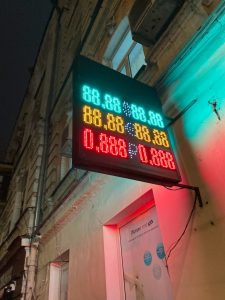Forex traders are always on the lookout for the next big opportunity to make a profit. One such opportunity arises when a currency pair is in a downtrend. However, it can be challenging to know when the downtrend is about to end, and the price will start moving upwards again. In this article, we will explore the various methods traders can use to find the bottom of a downtrend in forex.
Understanding the Downtrend
Before we dive into the methods of finding the bottom of a downtrend, it is essential to understand what a downtrend is. In forex trading, a downtrend is a pattern of lower highs and lower lows. This means that the currency pair is continuously moving lower, and the price is getting cheaper.
Most traders use technical analysis to identify a downtrend. They look at price charts and use various indicators to determine the direction of the trend. Some of the most commonly used indicators include moving averages, trend lines, and the Relative Strength Index (RSI).
The Bottom of a Downtrend
The bottom of a downtrend is the point where the price stops falling and starts moving upwards. This is a critical point for forex traders because it marks the end of the downtrend and the beginning of a new trend. If traders can identify the bottom of a downtrend, they can make significant profits by buying the currency pair at a low price and selling it when the price rises.
Method 1: Support and Resistance Levels
One of the most popular methods of finding the bottom of a downtrend is by using support and resistance levels. These levels are areas on the chart where the price is likely to bounce back or reverse direction.
Support levels are areas where the price has previously bounced back from after falling. These levels are significant because traders believe that if the price falls to the support level again, it is likely to bounce back up. Resistance levels, on the other hand, are areas where the price has previously bounced back from after rising.
To find the bottom of a downtrend using support and resistance levels, traders look for the point where the price touches a support level and starts to move upwards. This is a strong signal that the downtrend is about to end, and the price is likely to start moving upwards.
Method 2: Candlestick Patterns
Another method of finding the bottom of a downtrend is by using candlestick patterns. Candlestick patterns are a visual representation of the price movement and can provide valuable information about the direction of the trend.
One of the most commonly used candlestick patterns for identifying the bottom of a downtrend is the Hammer pattern. This pattern has a long lower shadow and a small body, indicating that the price opened and closed near the top of the candle. This pattern is significant because it shows that the sellers have lost control, and the buyers are starting to take over.
Traders look for the Hammer pattern at the bottom of a downtrend. If they see this pattern, it is a strong signal that the downtrend is about to end, and the price is likely to start moving upwards.
Method 3: Fibonacci Retracement
The Fibonacci retracement tool is another popular method of finding the bottom of a downtrend. This tool uses a series of horizontal lines to identify areas of support and resistance.
Traders use the Fibonacci retracement tool to identify the point where the price is likely to bounce back up after falling. This point is usually at the 61.8% or 78.6% retracement level. If the price bounces back up from this level, it is a strong signal that the downtrend is about to end, and the price is likely to start moving upwards.
Conclusion
Finding the bottom of a downtrend in forex can be challenging, but there are various methods traders can use to identify this critical point. These methods include using support and resistance levels, candlestick patterns, and the Fibonacci retracement tool. By using these methods, traders can make significant profits by buying the currency pair at a low price and selling it when the price starts moving upwards. However, it is essential to remember that no method is foolproof, and traders should always use risk management strategies to protect their investments.






